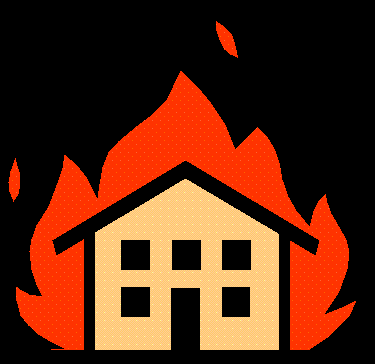|

Close your eyes, stand up and spin around twice. Imagine you were awakened from a sound sleep by the blaring sound of your smoke alarms. What do you imagine would happen next?
If you are like many Livonia residents, you'll probably picture yourself walking through a cloud of light, white smoke, taking the time to gather valuables with you on the way out. You would probably only see a few flames flickering in the background, not blocking your way out. If any part of that is what you imagined, it's time to open your eyes.
I've been in the fire service since 1981, and I can tell you from my own personal experience that fire is nothing like what you may have just imagined. Here's the truth from someone who has been there:
A real fire is hot, hotter than any heat you've ever experienced. Sure, it starts small, but it grows quickly. The gases that are released from the flames are poisonous, and they're also hot enough to burn your respiratory tract. The smoke is black and hot, and spreads quickly through the building. It builds up at the ceiling level and banks down from there.
A real fire isn't the Hollywood-type you may have seen on television or in the movies. The scene of a fire is no time to realize that you have no idea how to escape from it.
Every home, including mine, needs a well-thought-out, well-rehearsed fire escape plan, made and practiced before an actual fire breaks out. My family has a plan, and I hope every Livonia family has a plan or will after reading this article.
National statistics show that most citizens haven't planned ahead. According to the National Fire Protection Association, only a quarter of the homes out there have planned and practiced a home fire escape plan.
Not having a plan can be a deadly mistake. Of the nearly 4,000 people who die each year in fires in the United States, about 80 percent of them die in home fires. If a fire strikes your home, will you be able to get out alive?
Take out your home escape plan, or make one. Include a sketch of the home from a birds-eye view, and draw in the walls and label the rooms. Discuss two ways out of every room in the home, and make sure the people in those rooms know them and how to use them. If you have any family members with special needs, such as newborns, discuss how to get them out safely and whose responsibility it is to do so. Make an outside meeting place where everyone goes to meet other family members to check in. Have one person tell arriving fire companies if everyone is out or not.
I've seen a lot of tragedy in my career and nothing could be more heartbreaking than to see losses that could have been prevented. Take it from someone who knows. Make and practice your home escape plan.
Tom Kiurski is training coordinator for the Livonia Fire Department.
|
